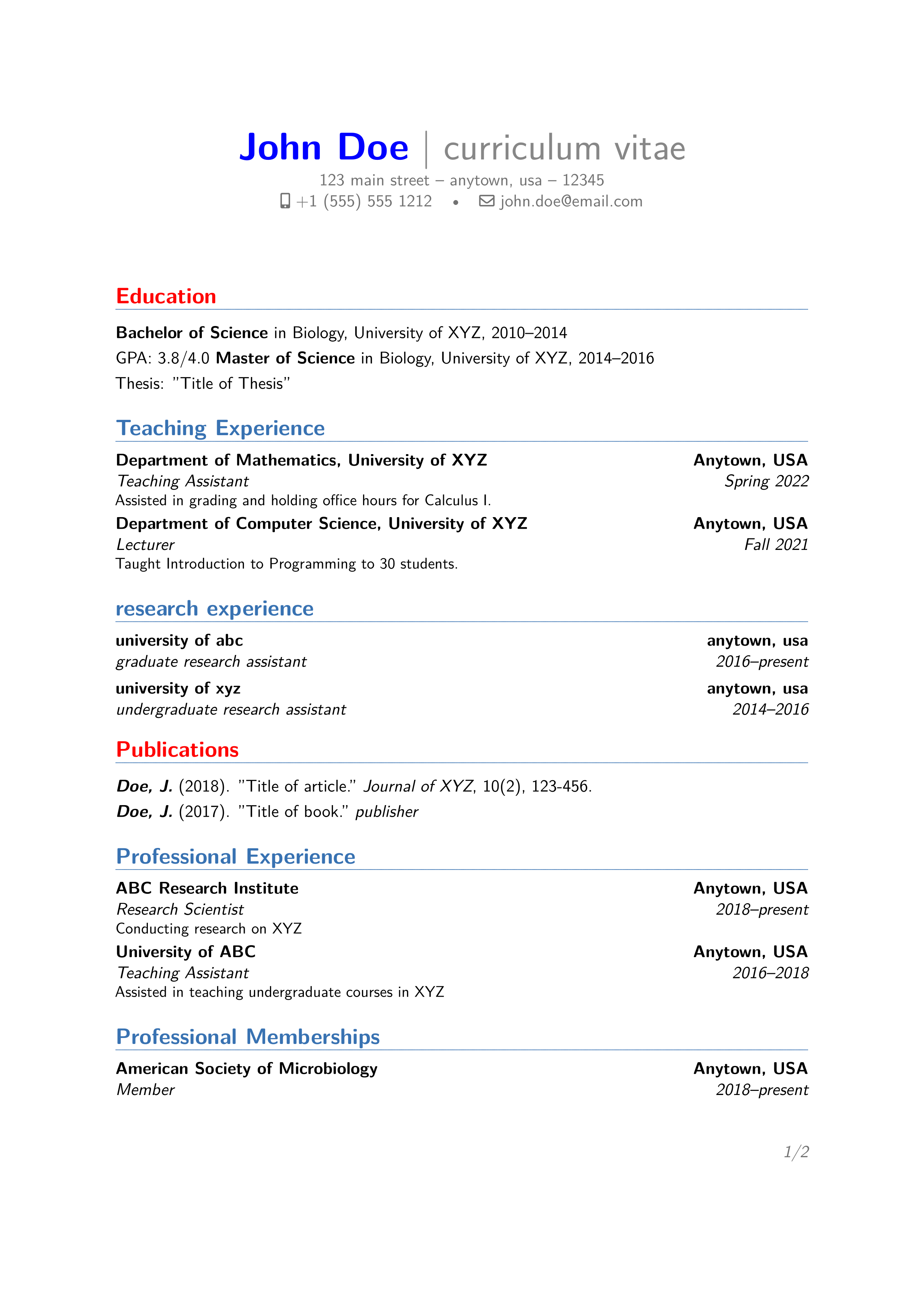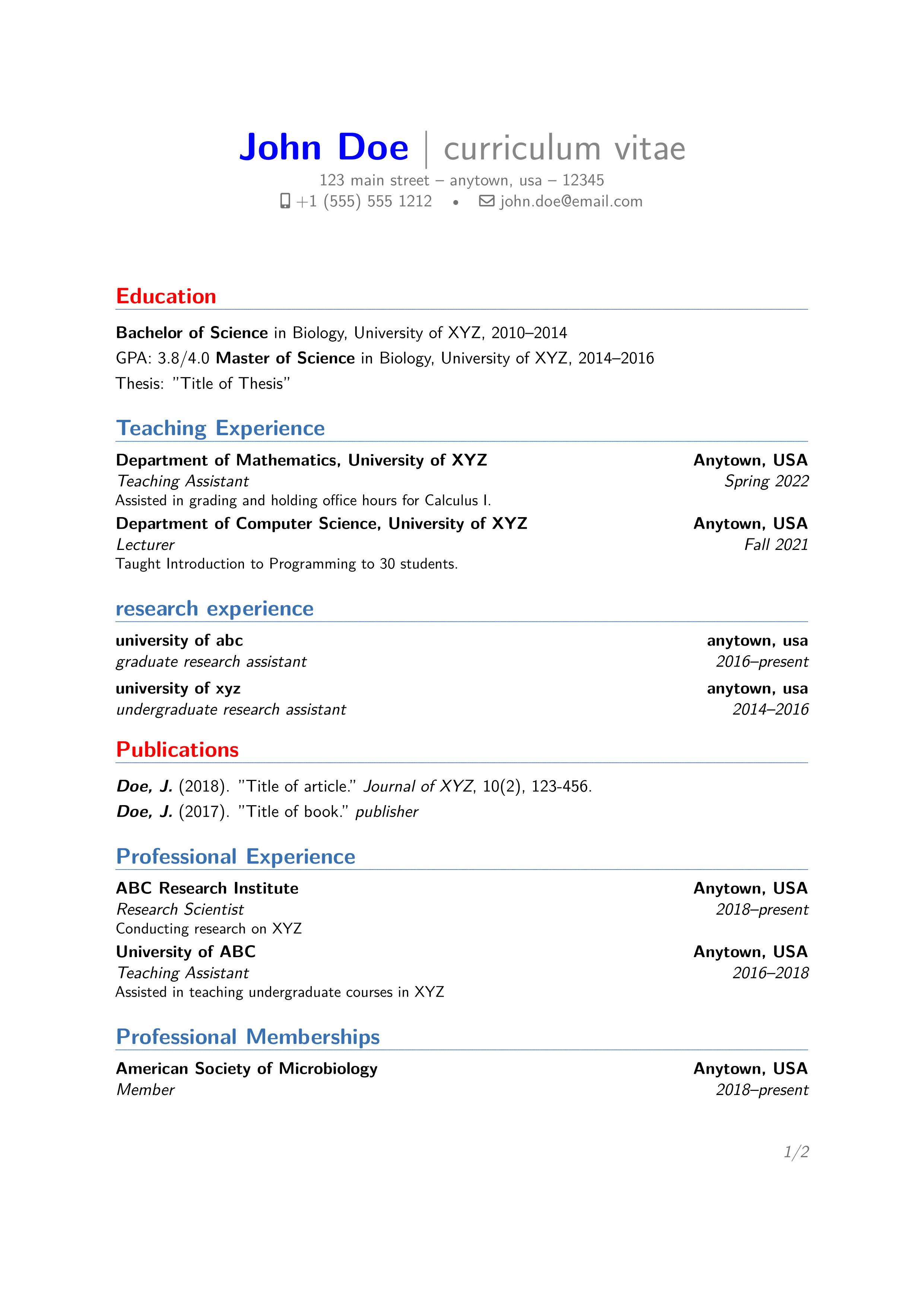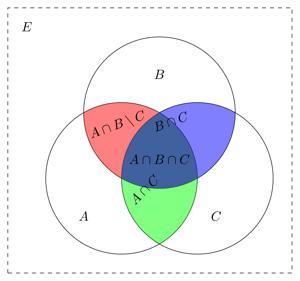Creating an academic CV can be a daunting task, especially if you're not sure where to start. Fortunately, LaTeX provides an easy and professional way to create an academic CV that showcases your academic achievements, publications, research interests, and more. In this guide, we'll walk you through the steps of creating an academic CV using LaTeX and provide you with a sample template that you can customize to suit your needs.
Step 1: Choose a LaTeX Template
\{There are many LaTeX templates available for academic CVs, and choosing the right one can save you a lot of time and effort. In this example, we'll be using the "moderncv" LaTeX template, which is designed specifically for academic CVs.
To use the "moderncv" template, you'll need to install the moderncv package, which can be done by running the following command in your LaTeX editor:
\usepackage{moderncv}
Once you've installed the moderncv package, you can use the following code to start your academic CV:
\documentclass[11pt,a4paper,sans]{moderncv}
\moderncvstyle{banking}
\moderncvcolor{blue}
\usepackage[utf8]{inputenc}
\usepackage[scale=0.75]{geometry}
\name{john}{doe}
\title{curriculum vitae}
\address{123 main street}{anytown, usa}{12345}
\phone[mobile]{+1~(555)~555~1212}
\email{[email protected]}
\begin{document}
\makecvtitle
\section{education}
\cventry{2010--2014}{bachelor of science}{university of xyz}{anytown, usa}{}{}
\cventry{2014--2016}{master of science}{university of xyz}{anytown, usa}{}{}
\section{research experience}
\cventry{2016--present}{graduate research assistant}{university of abc}{anytown, usa}{}{}
\cventry{2014--2016}{undergraduate research assistant}{university of xyz}{anytown, usa}{}{}
\section{publications}
\cvitem{}{doe, j. (2018). "title of article." journal of xyz, 10(2), 123-456.}
\cvitem{}{doe, j. (2017). "title of book." publisher.}
\end{document}
This code sets the document class to "moderncv," defines the style and color of the CV, sets the name, address, phone number, and email address of the applicant, and creates three sections for education, research experience, and publications.
Step 2: Customize Your CV
Once you've created the basic structure of your academic CV, you can customize it to suit your needs. For example, you can add additional sections for teaching experience, awards and honors, or professional memberships. You can also customize the formatting of your CV by adjusting the font size, color, and style.
Here's an example of how you can customize the "Education" section of your academic CV:
Adding a Teaching Experience Section:
If you have experience as a teaching assistant or have taught courses as a lecturer, you can add a section to your CV to showcase this experience. You can include the course name, the number of students, and a brief description of your teaching responsibilities.
\section{Teaching Experience}
\cventry{Spring 2022}{Teaching Assistant}{Department of Mathematics, University of XYZ}{Anytown, USA}{}{Assisted in grading and holding office hours for Calculus I.}
\cventry{Fall 2021}{Lecturer}{Department of Computer Science, University of XYZ}{Anytown, USA}{}{Taught Introduction to Programming to 30 students.}
Adding an Awards and Honors Section:
If you have received any awards, scholarships, or honors during your academic career, you can add a section to your CV to showcase these achievements. You can include the name of the award, the organization that granted it, and the year it was awarded.
\section{Awards and Honors}
\cvitem{2021}{Outstanding Graduate Research Award, Department of Biology, University of XYZ}
\cvitem{2019}{Graduate Research Fellowship, National Science Foundation}
Adding a Professional Memberships Section:
\section{Professional Memberships}
\cventry{2018--present}{Member}{American Society of Microbiology}{Anytown, USA}{}{}
\cventry{2020--present}{President}{Graduate Student Association, Department of Biology, University of XYZ}{Anytown, USA}{}{}
Customizing the Formatting:
You can customize the formatting of your academic CV by adjusting the font size, color, and style. For example, you can change the color of your name and section headings, or change the font size of your publication entries.
\name{\color{blue}John}{\color{blue}Doe}
\section{\textcolor{red}{Education}}
\cvitem{}{\textbf{Bachelor of Science} in Biology, University of XYZ, 2010--2014}
\cvitem{}{\textbf{Master of Science} in Biology, University of XYZ, 2014--2016}
\section{\textcolor{red}{Publications}}
\cvitem{}{\textbf{\textit{Doe, J.}} (2018). "Title of article." \textit{Journal of XYZ}, 10(2), 123-456.}}
Step 3: Add Details to Your Sections
Now that you've customized the basic structure of your academic CV, it's time to start adding details to each section. Here's an example of how you can add details to the "Education" section:
\section{Education}
\cventry{2010--2014}{Bachelor of Science}{University of XYZ}{Anytown, USA}{}{GPA: 3.8/4.0}
\cventry{2014--2016}{Master of Science}{University of XYZ}{Anytown, USA}{}{Thesis: "Title of Thesis"}
In this example, we've added the GPA for the Bachelor's degree and the title of the Master's thesis. You can add similar details to the other sections of your academic CV.
Step 4: Include Your Professional Experience
In addition to your education, your academic CV should also include your professional experience. This can include research assistantships, teaching assistantships, or other relevant work experience. Here's an example of how you can add a "Professional Experience" section to your academic CV:
\section{Professional Experience}
\cventry{2018--present}{Research Scientist}{ABC Research Institute}{Anytown, USA}{}{Conducting research on XYZ}
\cventry{2016--2018}{Teaching Assistant}{University of ABC}{Anytown, USA}{}{Assisted in teaching undergraduate courses in XYZ}
Step 5: Highlight Your Publications
One of the most important sections of an academic CV is the publications section. This is where you can highlight your research and publications. Here's an example of how you can add details to your "Publications" section:
\section{Publications}
\cvitem{}{Doe, J. (2018). "Title of article." Journal of XYZ, 10(2), 123-456.}
\cvitem{}{Doe, J. (2017). "Title of book." Publisher.}
Step 6: Review and Edit Your CV
Once you've added all the necessary details to your academic CV, it's important to review and edit it carefully. Check for any spelling or grammatical errors, ensure that the formatting is consistent throughout the document, and make sure that all the information is accurate and up-to-date.
the whole thing put together:
\documentclass[11pt,a4paper,sans]{moderncv}
\moderncvstyle{banking}
\moderncvcolor{blue}
\usepackage[utf8]{inputenc}
\usepackage[scale=0.75]{geometry}
\name{\color{blue}John}{\color{blue}Doe}
\title{curriculum vitae}
\address{123 main street}{anytown, usa}{12345}
\phone[mobile]{+1~(555)~555~1212}
\email{[email protected]}
\begin{document}
\makecvtitle
\section{\textcolor{red}{Education}}
\cvitem{}{\textbf{Bachelor of Science} in Biology, University of XYZ, 2010--2014}{GPA: 3.8/4.0}
\cvitem{}{\textbf{Master of Science} in Biology, University of XYZ, 2014--2016}{Thesis: "Title of Thesis"}
\section{Teaching Experience}
\cventry{Spring 2022}{Teaching Assistant}{Department of Mathematics, University of XYZ}{Anytown, USA}{}{Assisted in grading and holding office hours for Calculus I.}
\cventry{Fall 2021}{Lecturer}{Department of Computer Science, University of XYZ}{Anytown, USA}{}{Taught Introduction to Programming to 30 students.}
\section{research experience}
\cventry{2016--present}{graduate research assistant}{university of abc}{anytown, usa}{}{}
\cventry{2014--2016}{undergraduate research assistant}{university of xyz}{anytown, usa}{}{}
\section{\textcolor{red}{Publications}}
\cvitem{}{\textbf{\textit{Doe, J.}} (2018). "Title of article." \textit{Journal of XYZ}, 10(2), 123-456.}
\cvitem{}{\textbf{\textit{Doe, J.}} (2017). "Title of book." \textit{publisher}}
\section{Professional Experience}
\cventry{2018--present}{Research Scientist}{ABC Research Institute}{Anytown, USA}{}{Conducting research on XYZ}
\cventry{2016--2018}{Teaching Assistant}{University of ABC}{Anytown, USA}{}{Assisted in teaching undergraduate courses in XYZ}
\section{Professional Memberships}
\cventry{2018--present}{Member}{American Society of Microbiology}{Anytown, USA}{}{}
\cventry{2020--present}{President}{Graduate Student Association, Department of Biology, University of XYZ}{Anytown, USA}{}{}
\section{Awards and Honors}
\cvitem{2021}{Outstanding Graduate Research Award, Department of Biology, University of XYZ}
\cvitem{2019}{Graduate Research Fellowship, National Science Foundation}
\end{document}
the above tex code will produce the following CV:

Conclusion
Creating an academic CV using LaTeX is a great way to showcase your academic achievements, research interests, and publications in a professional and polished manner. With the "moderncv" template and the steps outlined in this guide, you can create an academic CV that highlights your strengths and accomplishments. Remember to customize your CV to suit your individual needs, add relevant details to each section, and review and edit it carefully before submitting it to potential employers or academic institutions.




















0 Comments, latest
No comments.